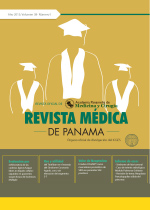Apendectomías negativas en el servicio de cirugía general del Hospital Dr. Rafael Hernández L.
Autores/as
DOI:
https://doi.org/10.37980/im.journal.rmdp.20232218Palabras clave:
apéndice cecal, apendicetomía negativa, laparoscopia, apendicetomíaResumen
Introducción la apendicitis aguda corresponde a la presencia de cambios inflamatorios a nivel del apéndice cecal o vermiforme. Representa uno de los principales motivos de consulta de dolor abdominal a nivel mundial. Los mecanismos fisiopatológicos de esta entidad confluyen en una vía común que desencadena la obstrucción del lumen del apéndice cecal, comprometiendo su circulación y consecuentes cambios inflamatorios. Según estos cambios podemos encontrar diferentes fases en el apéndice cecal denominadas: catarral, flegmonosa, necrótica, perforada. El diagnóstico de esta patología se obtiene mediante la integración de anamnesis, examen físico y laboratorios, siendo los estudios de imagen reservados para casos con clínica dudosa. El manejo de elección es la resección quirúrgica. Metodología: Se realizó un estudio retrospectivo. El universo de estudio fueron todos los pacientes ingresados con diagnóstico de apendicitis aguda en el Hospital Dr. Rafael Hernández L., de enero a diciembre 2018. Se contemplaron un total de 388 expedientes, se revisaron 200 de los cuales se excluyeron 7 por falta de información. Resultados: 100 pacientes fueron de sexo masculino y 93 del sexo femenino, la mediana de edad fue 27 años. El abordaje más utilizado fue el abierto 73% y luego laparoscópico 16% Con 1.6%. Conversión: La mediana de estancia hospitalaria fue 1 día. El análisis histopatológico revelo 15% de apendicectomías negativas. Conclusión: El porcentaje de apendicectomías negativas en el servicio de cirugía general fue muy similar al publicado en otras revisiones. Tomando en cuenta las escalas de valoración diagnostica y los estudios de imagen, estas tasas pueden ser aún menor.
Archivos adicionales
Publicado
Número
Sección
Licencia
Derechos de autor 2023 Infomedic Intl.Derechos autoriales y de reproducibilidad. La Revista Médica de Panama es un ente académico, sin fines de lucro, que forma parte de la Academia Panameña de Medicina y Cirugía. Sus publicaciones son de tipo acceso gratuito de su contenido para uso individual y académico, sin restricción. Los derechos autoriales de cada artículo son retenidos por sus autores. Al Publicar en la Revista, el autor otorga Licencia permanente, exclusiva, e irrevocable a la Sociedad para la edición del manuscrito, y otorga a la empresa editorial, Infomedic International Licencia de uso de distribución, indexación y comercial exclusiva, permanente e irrevocable de su contenido y para la generación de productos y servicios derivados del mismo. En caso que el autor obtenga la licencia CC BY, el artículo y sus derivados son de libre acceso y distribución.






